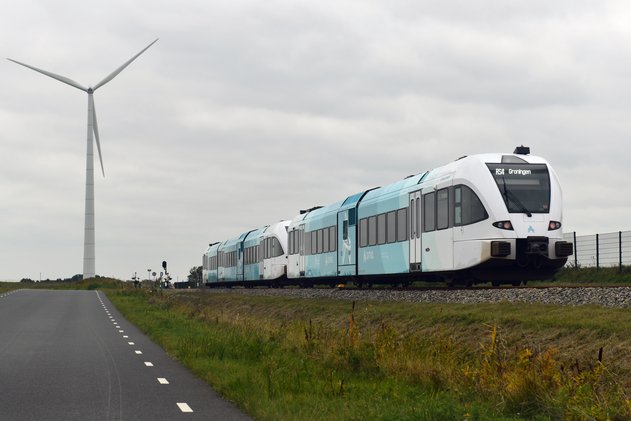With this direct train, passengers in the northern border regions will have the opportunity to transfer more easily and quickly to European trains that will stop in Bremen and Groningen in the future. Province of Groningen, Land Lower Saxony and Bremen already agreed in the 2019 cooperation agreement to commission this study, based on the following assumptions:
- Taking into account opening times of the Friesenbrücke and bridges on the Dutch side.
- Maintain existing travel options (as planned after 2025, after completion of construction step 1)
- Limited longer-term investment and operating costs and no short-term investment costs.
The study was carried out by Swiss research firm SMA.

Conclusions
This study shows that a direct train connection between Groningen and Bremen (without changing trains in Leer) is not feasible in the short term (within 3 years) based on these assumptions. This is due to the established opening times of the Friesenbrücke for trains. Per hour, the bridge is 'available' for train traffic for 20 minutes. This affects timetable reliability too much. Additional investments are also expected to be needed at Groningen station.
In the longer term, the existing local train between Bremen and Bad Zwischenahn could continue to Groningen (variant RS30). In Germany, there are plans to run this train more frequently - every half-hour - between Leer and Oldenburg (Deutschlandtakt). The investments for this solution are lower than those currently expected for construction step 2. The opening times of the Friesenbrücke do not affect the timetable of this train.
For this new route, additional research is needed into turning trains at Groningen and Bremen stations, as there is now limited space at both stations for this purpose. Because the train will run more frequently, there will be higher operating costs and more train sets will be needed. However, this new train connection is expected to generate more passengers and thus more revenue. This variant will not be able to run until 2036 at the earliest.
Follow-up
The Wunderline steering group on 15 June decided to include the results of the direct train study in the follow-up development of building step 2.